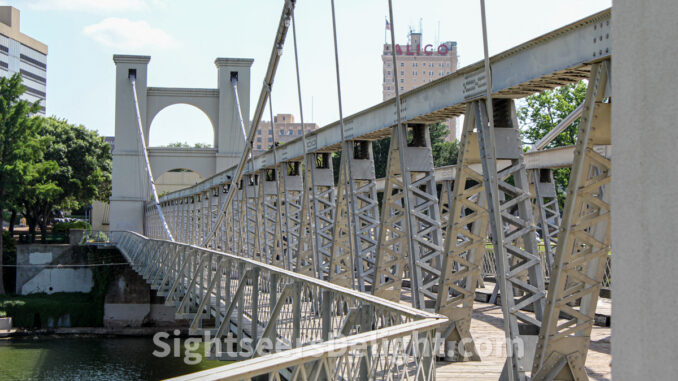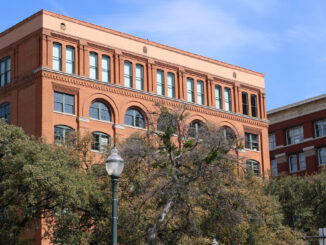
WACO, Texas — The Brooklyn Bridge and the Golden Gate Bridge are among the country’s most iconic spans, but so too is the 143-year-old Waco Suspension Bridge.
While lesser known, the Waco Bridge opened to traffic in January 1870, making it roughly 13 years older than the more famous Brooklyn Bridge.
For its part, the 475-foot-long Waco Bridge forever changed travel in the area. Built at an estimated cost of roughly $141,000 (estimates vary) and designed by Thomas M. Griffith, the bridge was the first major suspension bridge in the state of Texas.
“The bridge is iconic — it is an easy identifier for visitors to remember and is a fun landmark,” Elizabeth Taylor, director of Waco & the Heart of Texas, told Sightseers’ Delight.
“The Suspension Bridge is not likely the reason that a lot of people come to Waco – but it is definitely a major attraction once people are here,” Taylor said. “Fans of Texas history find their way to the Suspension Bridge because it is a living testament to the era of cotton and cattle in Texas history.”
Situated between Austin and Dallas, Waco was located on the important Chisholm Trail, the north-south route used to transport cattle from ranches in Texas to railheads in Kansas. But before the bridge was built, anyone wanting to cross the Brazos River relied on a ferry, a dangerous, if not time-consuming, prospect.
Transporting the materials to the job site is as impressive as the job site. The materials needed for the bridge were produced elsewhere, then transported by ferry to Bryan and brought 85 miles by wagon to Waco.
The bridge required 3 million bricks, according to the Historic Bridge Foundation, and cable for the bridge was supplied by the John Roebling Co., the same company that later built the Brooklyn Bridge.
“I am not sure people realize the Waco Suspension Bridge is older than the Brooklyn Bridge, and I think they are intrigued when they hear the history and see the resemblance to the bigger bridge in New York,” Taylor said. “The Roebling name is familiar to a great number of people, and I think this adds to the respect and attraction people have for the bridge.”
When it opened, the 18-foot-wide Waco Bridge was wide enough for stagecoaches to pass and allowed cattle to cross the river. At first the bridge was privately owned and travelers had to pay a toll to cross.
“The history of the bridge tells us that it was built by enterprising businessmen who saw an opportunity to make an economic impact on this community and they came together with their own money to build the bridge,” Taylor said. “It was originally a toll bridge, underscoring again the entrepreneurial spirit of the businessmen who came together to build it.”
In 1889, McLennan County purchased the bridge for the handsome sum of $75,000, according to the Texas State Historical Association. In turn, they sold it to the city of Waco for $1 on the condition the toll is eliminated.
Vehicles continued to used the bridge until 1971. The bridge, which is on the National Register of Historic Places, was refurbished several times over the years — including a major overhaul in 1913, which saw the addition of steel trusses to accommodate heavier weights — and it today open to pedestrian traffic only and is centerpiece of the city’s river walk.
Today, the 143-year-old bridge is a true icon in this city of of more than 120,000 residents. While the Brooklyn Bridge may be longer and more famous than its counterpart in Waco, at 130 years old it’s still the newbie to the duo.
“From a tourism perspective, the bridge is iconic — it is an easy identifier for visitors to remember and is a fun landmark,” Taylor said. “Because it is in a park on the river, it is easily accessible and visible to people as they drive through, walk and play along the river. We see people enjoying the Bridge and the park on a daily basis.”





